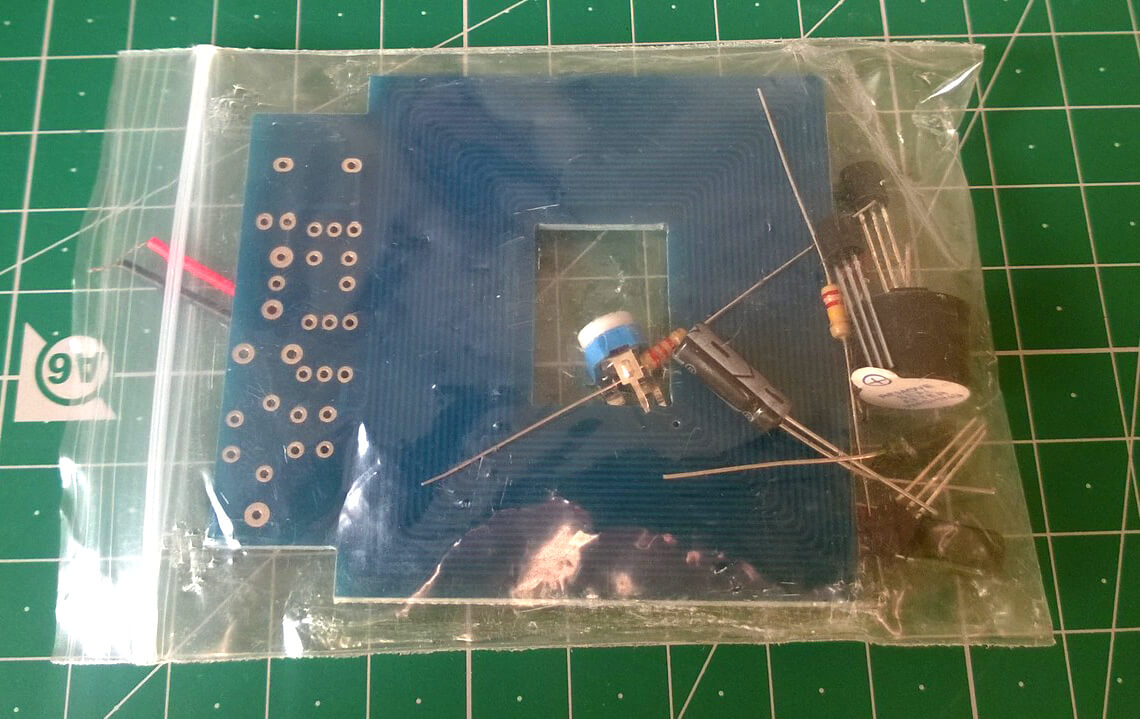
Bei einer Bestellung mit elektronischen Bauteilen hatte ich mir den Bausatz eines "DIY Metalldetektor Kit" bestellt. Hier der Zusammenbau und das Ergebnis der Tests:

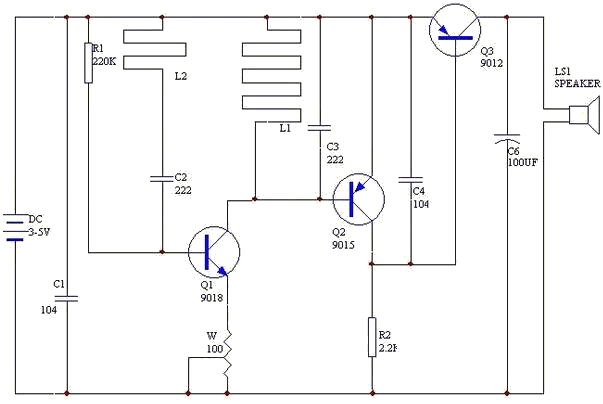
Im Internet habe ich folgende Beschreibung zur Funktionsweise des Bausatzes gefunden:
"Q1, L1, L2, C2, C3, R1, W, W composed of high-frequency oscillation circuit, adjust the potentiometer,
can change the oscillator gain, so that the oscillator is in a critical state, that is to say that the
oscillator. Q2, Q3 detection circuit, circuit oscillation, oscillation voltage AC voltage exceeds 0.6V,
Q2 will be conducting the C4 discharge circuit in the negative half cycle, resulting in Q3 cut-off;
when the detection of metal objects near the coil L1, will produce eddy current in the metal conductor,
the oscillating circuit increases the energy loss the positive feedback is weakened, in the critical
state of the oscillator oscillation is weakened, or even unable to maintain minimum energy required
for the oscillation to stop vibration, the Q2 cutoff, R2 charging C4, Q3 conduction, drive buzzer.
According to whether there is sound, you can determine whether there is a metal object under the probe
coil."
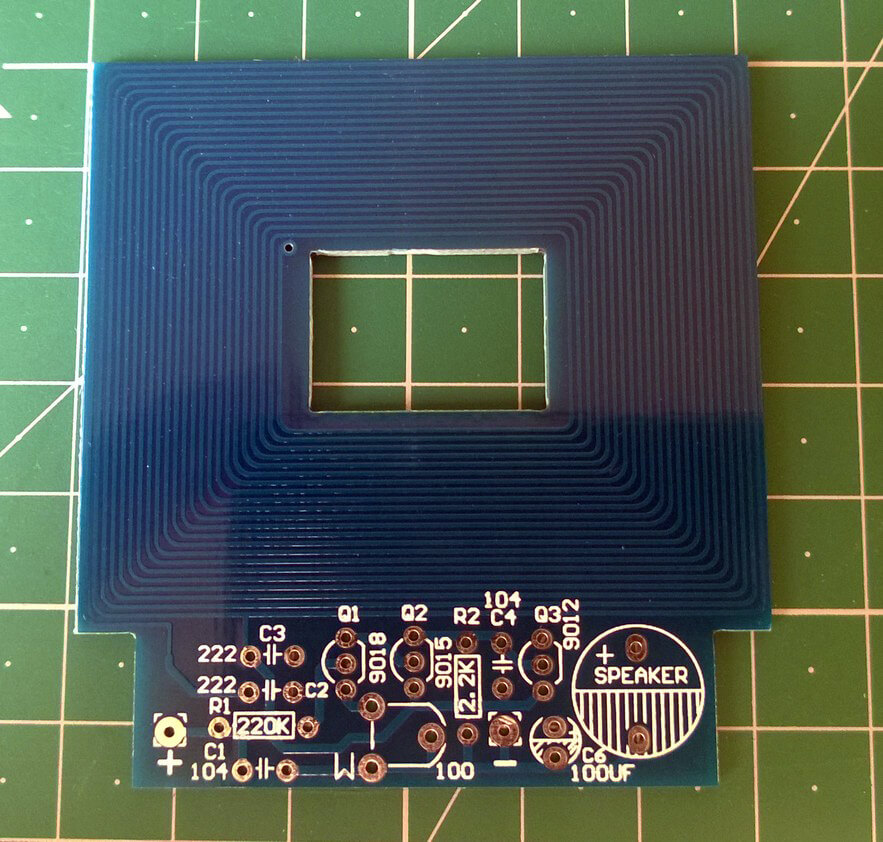
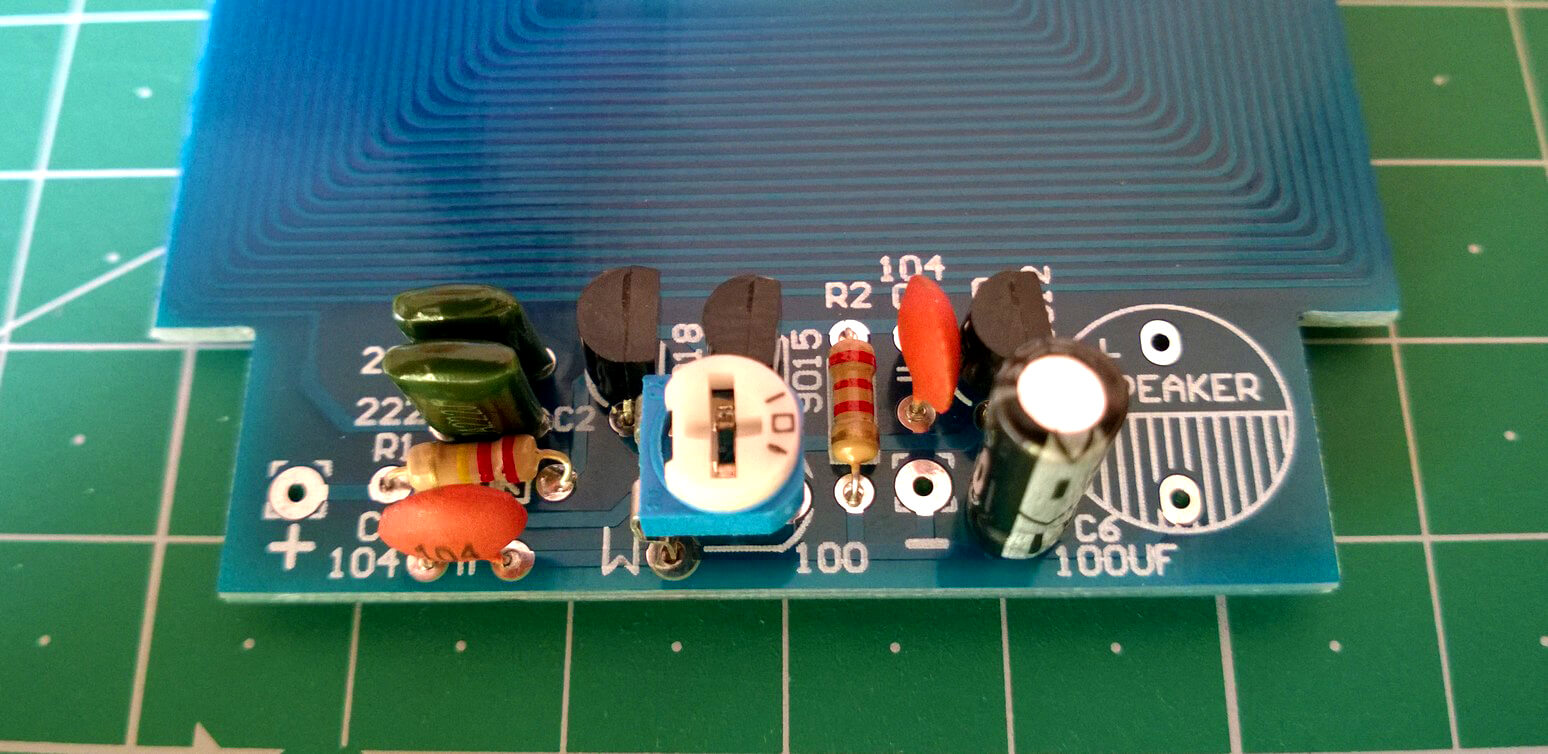
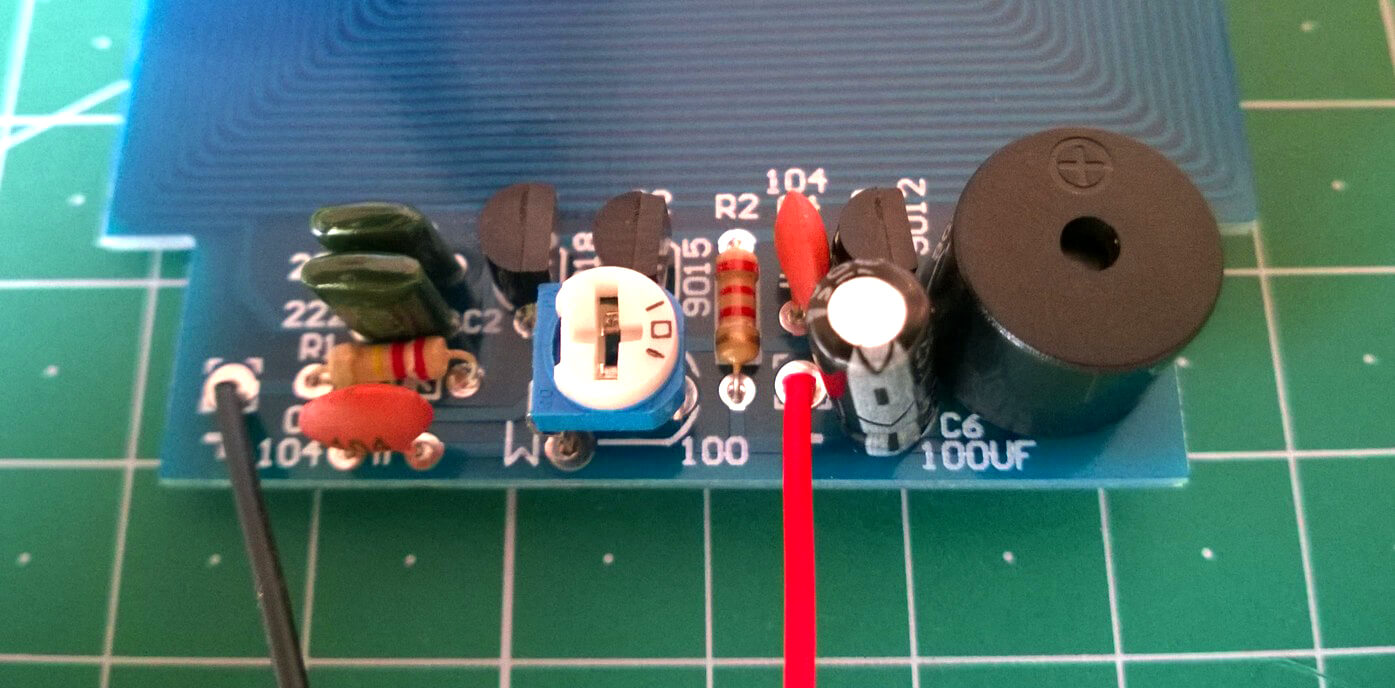
Nachdem ich eine 3V-Knopfbatterie (CR2032) angeschlossen hatte, begann das Gerät erst einmal laut an
zu piepen. Doch nach der Einjustierung mit dem kleinen Trim-Potentiometer, war das Geräusch verschwunden.
Nun testete ich das Gerät, indem ich metallische Gegenstände in verschiedenster Größe unter das Gerät
platzierte.
Fazit: Das Gerät funktioniert grundsätzlich, allerdings müssen die Metall-Gegenstände schon
etwas größer sein (Ø > 2cm) und das Gerät muss sehr nah an dem Gegenstand platziert werden (< 2cm).
Zur Schatzsuche im Freien ist es daher vermutlich nicht wirklich geeignet. Es findet übrigens auch keine
Stromleitungen in der Wand.